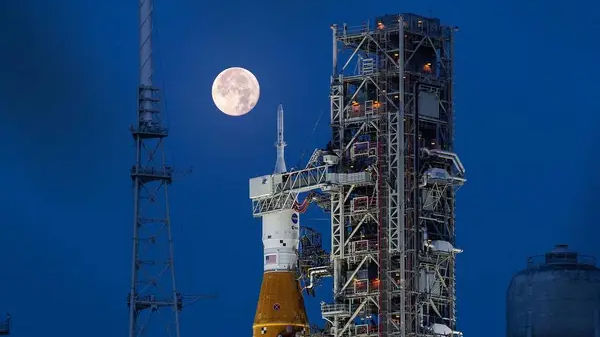NASA‘s Artemis 1 mission, which is set to launch on Monday, will travel beyond the far side of the Moon and back.
The meticulously choreographed unmanned flight should produce stunning images as well as valuable scientific data. The massive Space Launch System rocket will take off from Launch Complex 39B at Florida’s Kennedy Space Center.
Also Read| 53 feet wide asteroid to skirt around the Earth, NASA astronomers warn
What is Artemis I ?
The Artemis programme is a set of current NASA space missions with a number of lofty objectives, such as putting the first female astronaut and the first astronaut of colour on the South Pole of the Moon. Since Apollo 17 in 1972, Artemis 3 will be the US space agency’s first crewed Moon landing mission. The long-term objectives of NASA are much more ambitious, even if the Artemis space missions are primarily focused on lunar exploration.
NASA plans to fly a crewed mission to Mars in the future using the technology and science produced by the Artemis spaceflights.
A new space station will be constructed in lunar orbit as part of NASA’s ambitious “Moon to Mars” plan, and a facility on the Moon will eventually become livable.
Also Read| Why moon caves could provide perfect shelter for astronauts
What is the significance of the name Artemis?
Artemis is the mythological Greek goddess of the Moon and Apollo’s twin sister. The connection to the mission that first sent humans to the Moon 50 years ago is thus obvious.
Meanwhile, the crewed spacecraft under development is known as Orion. Orion is one of the most recognisable constellations in the sky, and in Classical mythology, he is Artemis’ hunting companion.
Also Read| NASA satellite images show how parched United Kingdom is due to heatwave compared to a year ago
Mission Timeline
This uncrewed mission, formerly known as Exploration Mission-1, is a comprehensive test of the Space Launch System (SLS) and the Orion module.
The SLS will launch from Florida’s Kennedy Space Center, and once in space, the Orion module will detach and travel to the Moon. Its orbit will take it 62 miles above the lunar surface before continuing on for another 40,000 miles. After a 42-day mission, the module will splash down in the Pacific Ocean near California.
A variety of science and technology experiments will take place in deep space on board. These are intended to broaden lunar knowledge, advance technological advancements, and shed light on deep space radiation.







